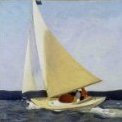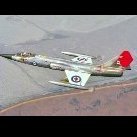-
Posts
111 -
Joined
-
Last visited
Contact Methods
-
Website URL
http://www.michaelleek.co.uk
Profile Information
-
Gender
Male
-
Location
The Holy Loch, Scotland
-
Interests
Sailing ship design and development.
Sailing warship design and development.
Development and history of marine painting.
Ship construction.
Model making.
Photography.
Drawing and painting.
Recent Profile Visitors
-
 Scottish Guy reacted to a post in a topic:
Warning points...
Scottish Guy reacted to a post in a topic:
Warning points...
-
 Michiel reacted to a post in a topic:
1:60 H.M.S. Beagle - OcCre
Michiel reacted to a post in a topic:
1:60 H.M.S. Beagle - OcCre
-
 EricWilliamMarshall reacted to a post in a topic:
Legacy of a Ship Model by Rob Napier
EricWilliamMarshall reacted to a post in a topic:
Legacy of a Ship Model by Rob Napier
-
 Torrens reacted to a post in a topic:
Harriet McGregor by Boccherini
Torrens reacted to a post in a topic:
Harriet McGregor by Boccherini
-
 Torrens reacted to a post in a topic:
Harriet McGregor by Boccherini
Torrens reacted to a post in a topic:
Harriet McGregor by Boccherini
-
 Torrens reacted to a post in a topic:
Harriet McGregor by Boccherini
Torrens reacted to a post in a topic:
Harriet McGregor by Boccherini
-
 Torrens reacted to a post in a topic:
Harriet McGregor by Boccherini
Torrens reacted to a post in a topic:
Harriet McGregor by Boccherini
-
 Torrens reacted to a post in a topic:
Harriet McGregor by Boccherini
Torrens reacted to a post in a topic:
Harriet McGregor by Boccherini
-
 Torrens reacted to a post in a topic:
Harriet McGregor by Boccherini
Torrens reacted to a post in a topic:
Harriet McGregor by Boccherini
-
 Torrens reacted to a post in a topic:
Harriet McGregor by Boccherini
Torrens reacted to a post in a topic:
Harriet McGregor by Boccherini
-
 Torrens reacted to a post in a topic:
Harriet McGregor by Boccherini
Torrens reacted to a post in a topic:
Harriet McGregor by Boccherini
-
 Torrens reacted to a post in a topic:
Harriet McGregor by Boccherini
Torrens reacted to a post in a topic:
Harriet McGregor by Boccherini
-
 Torrens reacted to a post in a topic:
Harriet McGregor by Boccherini
Torrens reacted to a post in a topic:
Harriet McGregor by Boccherini
-

kit review 1:32 Fifie – The Scottish Motor Fishing Vessel by Amati
Torrens replied to James H's topic in REVIEWS: Model kits
It’s not a quibble, but a perfectly legitimate observation - in this case based on practical, sea-going experience on Scottish fishing boats. If you’re happy for a model to be inaccurate, that’s your choice, but don’t criticise others if they are of a different opinion. -

kit review 1:32 Fifie – The Scottish Motor Fishing Vessel by Amati
Torrens replied to James H's topic in REVIEWS: Model kits
Do you know what the dimensions of the full size vessel was in feet and inches? -

Drafting instruments
Torrens replied to Kurt Johnson's topic in Modeling tools and Workshop Equipment
I would avoid any contact with water! Not good - and particularly not good in the 'nooks and crannies' as these are the places where rust will develop (unless the base material is brass, as were most of the better quality draughting instruments). A medium soft artists brush is the best method of removing excess polish. -

Drafting instruments
Torrens replied to Kurt Johnson's topic in Modeling tools and Workshop Equipment
I have a number of these drawing instrument sets, the majority by Kern, from Switzerland (from when I was working as an information and technical illustrator - long before computers made real draughting skills redundant!). The best material to clean them with is jewellers rouge paste or red jewellers polishing compound, applied with an electric mini drill, with a final hand polish using lint free cloths. Never use anything remotely abrasive, even the finest grade steel wool, as this will damage the chrome plating. And certainly never use any acid-based cleaning liquid, regardless of how much it's been diluted. -
For the past six months, if not longer, few Hegner scroll saws are available in the UK! Almost all are listed as 'currently unavailable'! I've registered my interest and have emailed the company and their UK distributor, but have heard nothing! Very frustrating as a Hegner scroll saw is what I would like!
-
Interesting responses! Thank you! It would seem I need to do more practical research, but that will probably have to wait until the coronavirus lockdown is lifted... However, one reason for needing a bandsaw is not just for modelling, but also for small DIY projects that often require a certain degree of accuracy in cutting. In addition to a band saw, I also need a scroll saw as the one I have no longer works (it cannot be repaired). Any recommendations?
-
No doubt this is not a new topic, but for me it is...! I would like to get a bandsaw; one that can cope with fine work as well as ‘rough’ cutting - although the emphasis for me is on accuracy, including tight curves (or as tight as possible). I’ve done extensive ‘research’, but I’m now overwhelmed by the sheer number of ‘reviews’, many of which leave so many questions unanswered, not the least about quality, etc. (I live in the UK, which may or may not restrict my choices.) What would others recommend, and why? With thanks in anticipation!
-
I was interested in the post regarding whether the crew slept in the focsle or in the deck house. On the north European side of the pond, most vessels of this size and period the crew did sleep in a focsle. A single deck house would often have the galley and, space permitting, accommodation for ‘senior ratings’, such as the bosun, carpenter (if carried) and the cook. All others would be down below in the focsle. Typical examples include classic British West Country schooners, and similar from Germany, France and the Scandinavian countries. Whilst I haven’t checked against the plans, I would suggest that the deck house on Leon is too small to accommodate all of the crew and the galley. There are also numerous references sources, such as the books by Basil Greenhill, that clearly show focsle accommodation for the crew. Indeed, on many coastal sailing vessels the deck house was the galley, nothing else. Another important factor, or question, is why the need for a dedicated companionway when the crew are accommodated in the deckhouse? A companionway would not be necessary to gain access to the hold, as this would be done via the hatches (and there’s plenty of photographic evidence to support this). A dedicated companionway is a clear indication of a focsle for the crew.
- 108 replies
-
- Finished
- brigantine
-
(and 2 more)
Tagged with:
-
In the interests of balance, my personal experience of ordering from Seawatch Books has been excellent, from ordering through to the receipt of a book. If a book is in print, I've always received a prompt response every time following the placement and payment of an order. I do not order books until they are in print. The reason is nothing to do with Seawatch, but because, as they often make clear on their website, they are waiting on authors to deliver before they can start the production process (a frustrating example being Volume Two of The Rogers Collection of Dockyard Models). These delays obviously impact on planned publication dates, so it's always best to wait until Seawatch confirm, via their website, that a book is available. Anyway, it's good that Bryan received his copy of the aforementioned book as I'm sure he's as delighted with it as I have been!
-
My apologies! I should have made myself clearer! I posted my original question not for myself, but to see what other members considered was the most accurate wooden kit currently available - and more as a discussion topic than anything else, although it's always interesting to hear from the manufacturers themselves, including the designers. My question is not as subjective as it might seem, for there are numerous examples of where kit manufacturers short-cuts show a divergence from historical and technical accuracy for cost or other reasons (and for 'other reasons' I believe it's because of inadequate initial research). I fully understand and recognise that if you want as close to technical and historical accuracy as possible, it will always be necessary to either significantly improve on an existing kit, or build from 'scratch' (but this wasn't the point of my question). That this is more the case with wooden kits than injection moulded plastic kits is obvious (plus there are, for many plastic kits, numerous third party up-grade sets). Within these caveats, what wooden kits do members believe, in their experience, are the most accurate?
-

Can i live without a BYRNES TABLE SAW
Torrens replied to shihawk's topic in Modeling tools and Workshop Equipment
Hi Anthony As the Bryne saw is made in the USA, is there a problem with the difference in voltage between the USA and the UK? If so, how did you resolve it? -
Even though I was referring specifically to the external appearance of a ship, I understand the point you're making; if you want maximum accuracy you have to scratch-build (awful term!). However, that's not within everyone's grasp and, for many, kits are their only option. It's on this basis that I posed my question. I also agree with you about Model Shipways or Bluejacket kits - far more accurate than comparable kits made in Europe. But maybe I'm wrong; maybe there are kits by European manufacturers that are as accurate?
-
From my experience, serious ship model kits from the US tend to be far more accurate than comparable models manufactured in Europe. That said, I do understand the 'problems' in making a kit where the frames follow full-size practice. The nearest example that I can think of is the kit of a Great Lakes brig by The a wood supplier, in Ohio.
-
Where to start! I could mention specific kits or manufacturers but that's not my question! However, to highlight just a few examples of details, most kits have over-scale belaying pins; most kits of vessels carrying boats show the boats with over-scale scantlings, etc, etc. What I'm really interested to know is what other members consider are the most accurate, particularly externally (far better to be positive than to be negative by slating one particular kit - I leave that to the reviewers!). I posted the question because a friend asked for a recommendation, but wanted a kit that matched the original as close as possible.
-

kit review 1:32 Fifie – The Scottish Motor Fishing Vessel by Amati
Torrens replied to James H's topic in REVIEWS: Model kits
I'm familiar with ring net boats and Fifies, having sailed as a guest on the former when they still fished Loch Fyne, etc, and I've sailed on the restored Fife Reaper (owned by the Scottish Fisheries Museum). I know ring net boats (derived from Fifies and Zulus) came in different hull lengths, and many had very small wheelhouses - often with only enough space for just one crew member, but in this kit the wheelhouse looks exceptionally small. Be interesting to see the plans from which the kit was based.
About us
Modelshipworld - Advancing Ship Modeling through Research
SSL Secured
Your security is important for us so this Website is SSL-Secured
NRG Mailing Address
Nautical Research Guild
237 South Lincoln Street
Westmont IL, 60559-1917
Model Ship World ® and the MSW logo are Registered Trademarks, and belong to the Nautical Research Guild (United States Patent and Trademark Office: No. 6,929,264 & No. 6,929,274, registered Dec. 20, 2022)
Helpful Links
About the NRG
If you enjoy building ship models that are historically accurate as well as beautiful, then The Nautical Research Guild (NRG) is just right for you.
The Guild is a non-profit educational organization whose mission is to “Advance Ship Modeling Through Research”. We provide support to our members in their efforts to raise the quality of their model ships.
The Nautical Research Guild has published our world-renowned quarterly magazine, The Nautical Research Journal, since 1955. The pages of the Journal are full of articles by accomplished ship modelers who show you how they create those exquisite details on their models, and by maritime historians who show you the correct details to build. The Journal is available in both print and digital editions. Go to the NRG web site (www.thenrg.org) to download a complimentary digital copy of the Journal. The NRG also publishes plan sets, books and compilations of back issues of the Journal and the former Ships in Scale and Model Ship Builder magazines.






